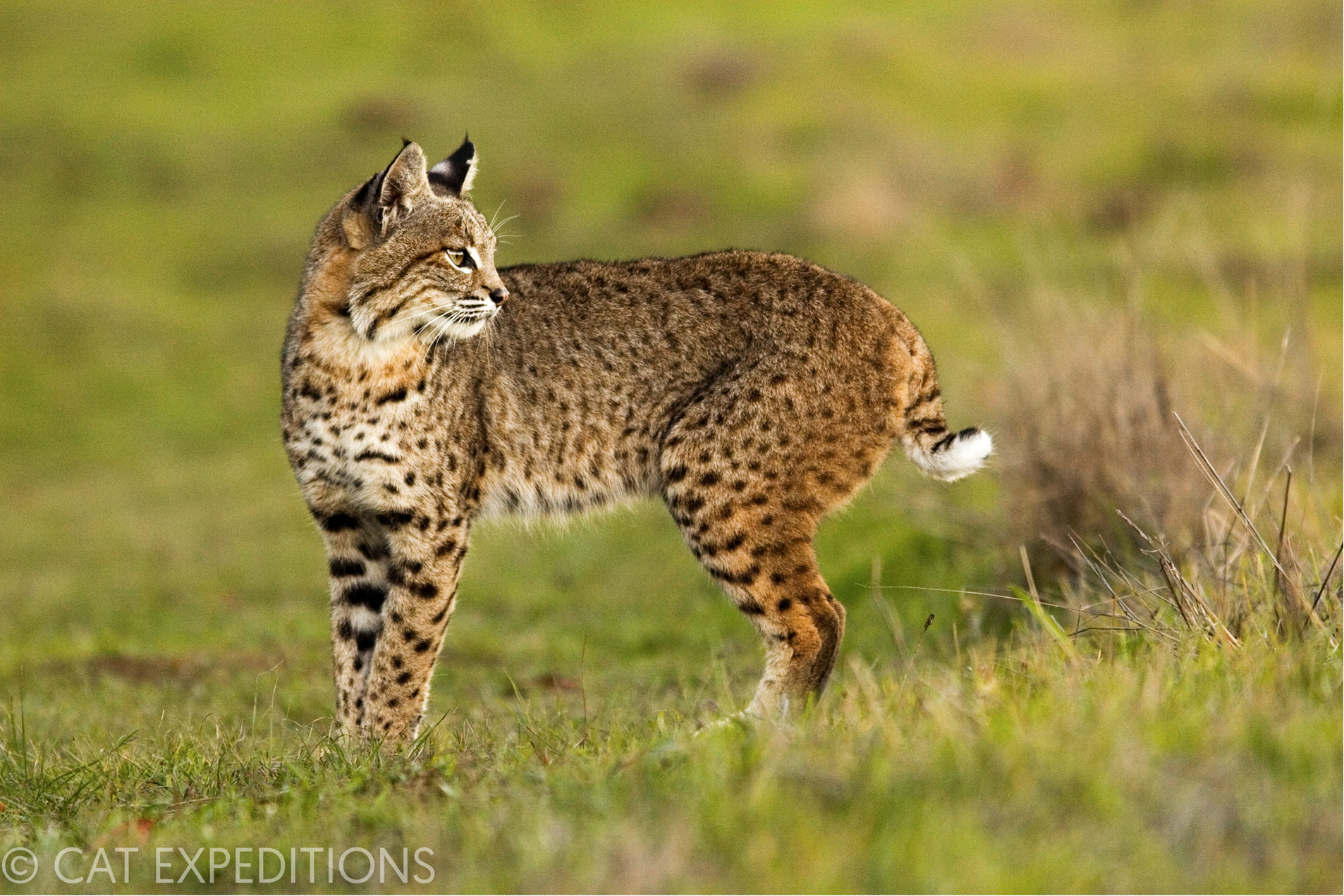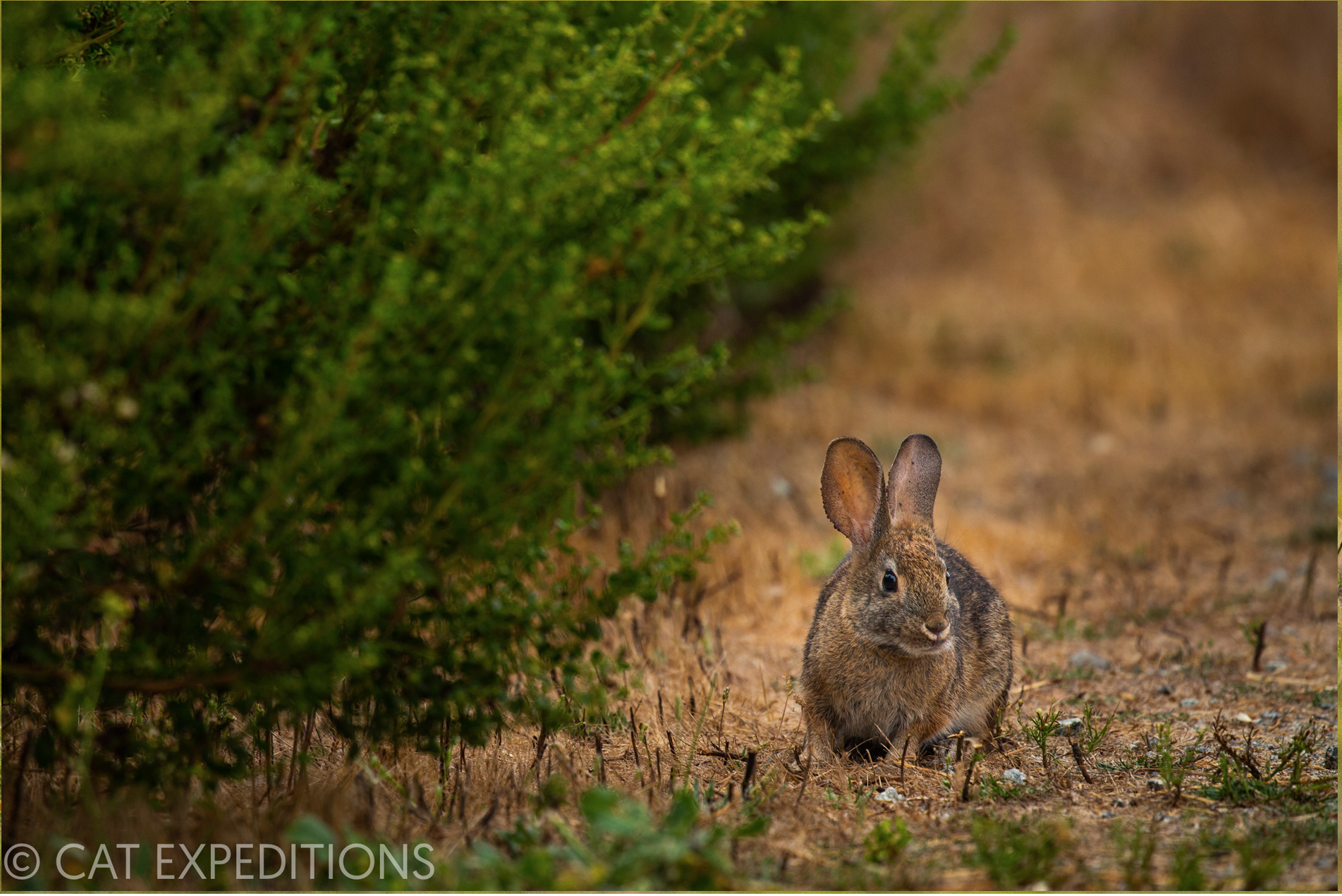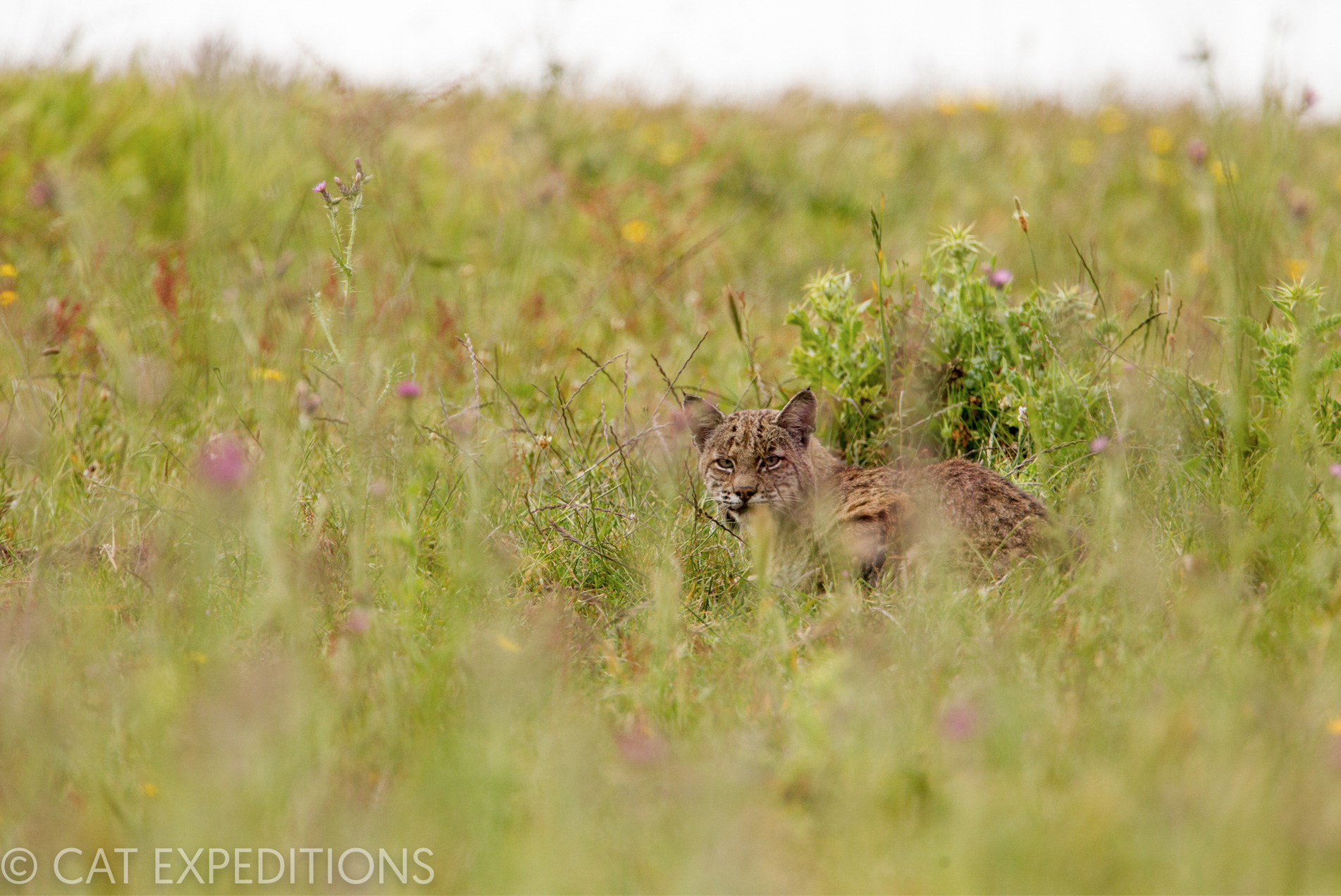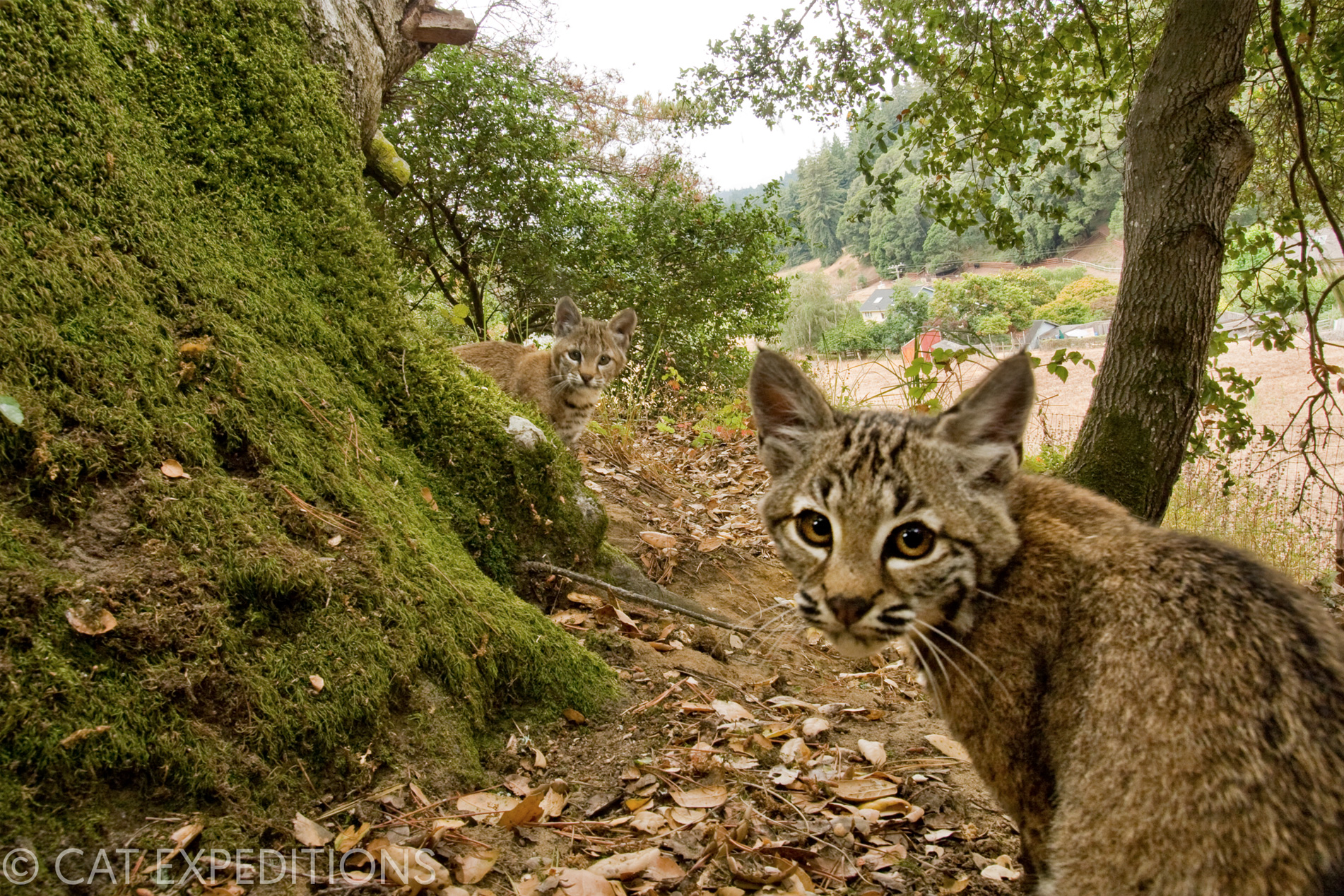Bobcat
BOBCAT (Lynx rufus)
The bobcat is North America's most widely distributed cat, but can be quite elusive. It's name is derived from its short, blunt tail that almost appears cut off. These cats predate mostly on rabbits and gophers, but can take prey animals eight times their own weight. Though not obvious from its common name, the bobcat belongs to the Lynx genus and is the smallest lynx in the world (sometimes it is referred to as the bay lynx, or lynx cat).
Difficulty: Medium
Bobcat Tour Statistics
12 BOBCAT
TOURS RUN
4.2 AVG NUMBER OF CATS SEEN PER TOUR
24 MINUTES ON AVG
WITH EACH CAT
Bobcat Description
The bobcat is a medium sized cat, being about two or three times bigger than a domestic cat. The ear tufts, for which the lynx species are famous for are often quite minimal on bobcats. Their tails are stubby and round. Their fur pattern is quite variable, with markings ranging from large blotches to faint spots. In Marin, where we run our bobcat photography tour the cats tend to have light, small spots. In California, the cats are on the smaller scale, with females weighing on average around seven kilograms (15 pounds), while the males weigh around 8-9 kilograms (18 pounds).
Bobcat Distribution and Habitat
Bobcats have the largest distribution of any wild cat in the United States, ranging all the way from Maine to southern California. In northern California, where we run the tour, however, is the best place to see and photograph them. Bobcats occupy many different habitats including forests, mountains, deserts, swamps, and shrubland. The habitat they prefer in California is called northern coastal scrub, a habitat that is unique to California and is quite endangered. This habitat is perfect for the cats as it provides plenty of cover for them to hide in and is also fantastic for their prey.
Bobcat Feeding Biology
Though bobcats predate on a large variety of prey, in most of their range they focus on rabbits. In norther California, rabbits are definitely on the menu, but their favorite prey are probably gophers. Most hunts start with a stalk, until the cat is less than three feet away from the gopher hole, at which point it freezes completely and then does an explosive jump to try and get the rodent before it disappears into its underground burrow. If it is successful, it will dispatch its prey by a quick and powerful bite to the back of the neck.
Bobcat Social Organization
Bobcats are solitary and territorial. Male territories are larger than those of females and try to encompass as many female territories as possible. Both male and female territories have core area that the cats use extensively with the outer edges of their territories often overlapping those of other individuals. During one of our bobcat photo tours, we were watching one female when all of a sudden, a male cat came out of the bushes. The two cats looked at each other, but the male then made a wide birth around the female, giving her plenty of space.
Bobcat Reproduction
Bobcats will mate and give birth any time of the year, but have a preference for mating in winter and giving birth in spring. On average, between two and three kittens are born, but litters of up to six have been reported. Bobcat kittens feed on their mother's milk for the first two to three months, and reach independence at eight to ten months. They will leave their mother's territory as early as nine month, but may stay with their mom for the first two years. They can live up two over twenty years in the wild though in general have lifespans around twelve years.





